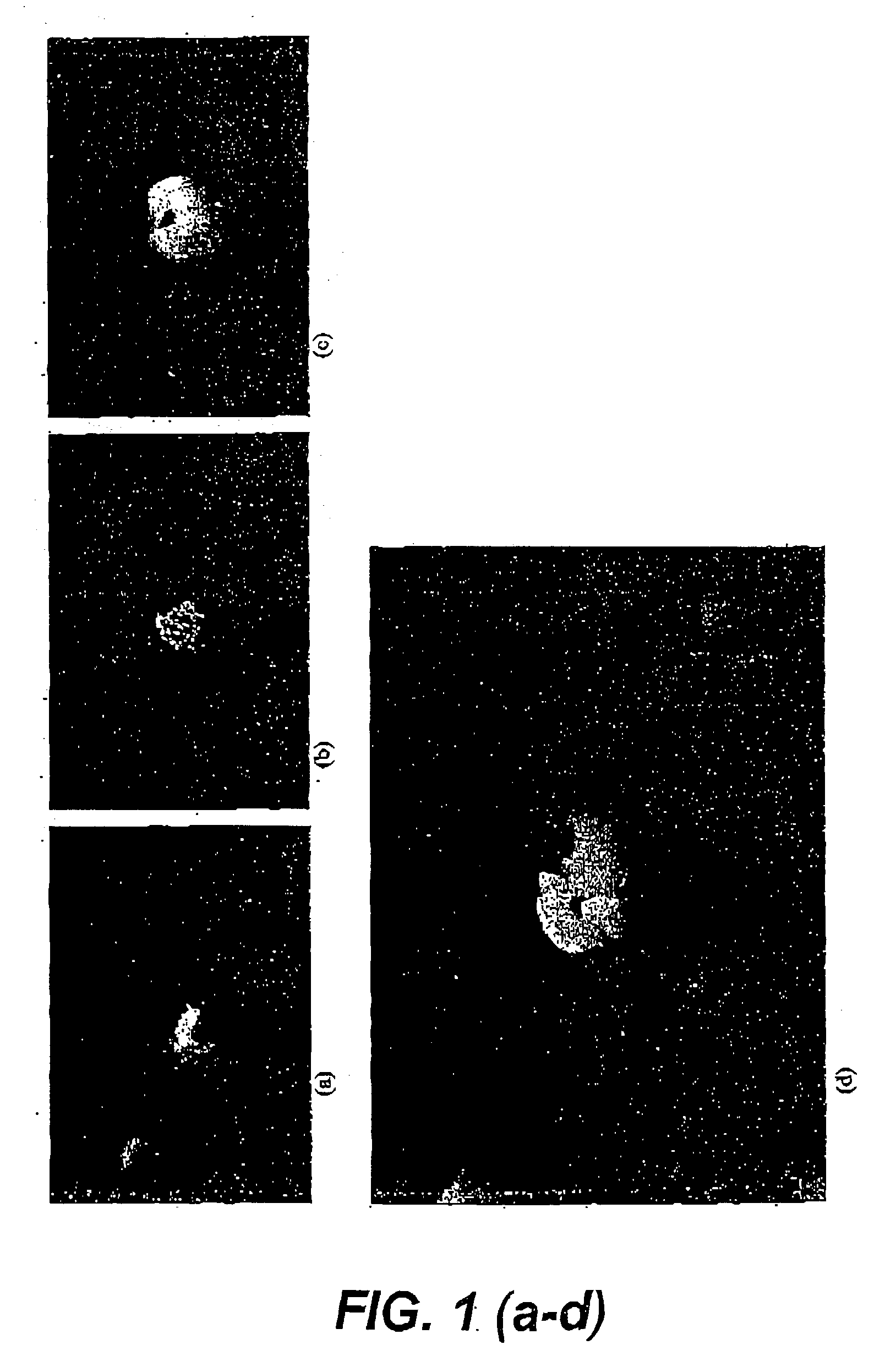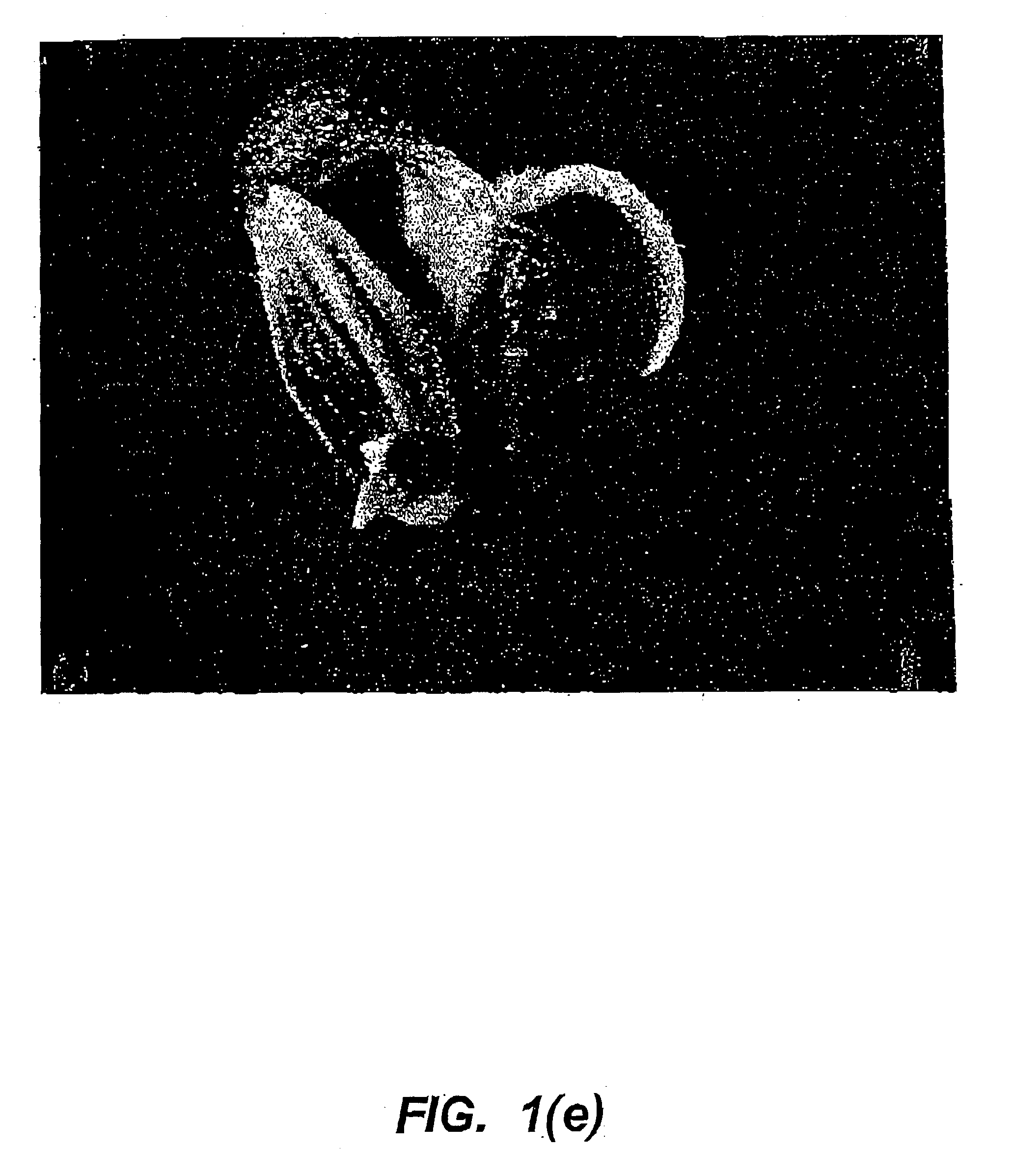Monocotyledonous plant transformation
a monocotyledonous plant and plant technology, applied in the field of monocotyledonous plant transformation, can solve the problems of reduced agronomic performance of transgenic plants, somaclonal variation, and difficult crop improvement by such methods, and achieve the effect of increasing the likelihood of somaclonal variation in transgenic plants
- Summary
- Abstract
- Description
- Claims
- Application Information
AI Technical Summary
Benefits of technology
Problems solved by technology
Method used
Image
Examples
example 2
Sugarcane Thin Sections
[0133] Sugarcane leaf sheath tissue taken from just above the meristem was taken from cultivar Q165 plants. Transverse thin section explants (2-3 mm) of leaf whorl were obtained from the harvested tissue. These are generally referred to as leaf thin sections.
[0134] Sugarcane (cultivar Q165) tops in the process of bolting to flower were harvested for inflorescence tissue. Transverse sections were made to produce 2-3 mm thin sections which contained a heterogeneous mixture of floral and leaf cells. These are generally referred to as inflorescence thin sections
example 3
Preliminary Experiments to Determine Culture Conditions for Leaf Whorl
[0135] Preliminary experiments using sugarcane leaf thin sections showed that although shoots were produced by TS explants under a range of culture conditions, it was clear that TS explants having their ba surface not contacting the medium ("top down") produced a significantly greater number of shoots. Also, the only TS explants which produced large numbers of shoots (>20 per explant) after 6 or 8 weeks of culture were those where the explant was oriented so that the basal surface did not contact the medium ("top down"). This trend was also evident, although less marked, after 5 weeks of culture.
[0136] Variations in section thickness showed that 1-2 mm, 2-3 mm and 5-6 mm thick sections may be used, although 2-3 mm sections are preferred for the purpose of microprojectile bombardment.
[0137] Cross-testing of NAA and BA concentrations was also performed using TS leaf whorl explants obtained from the Q187 and Q124 sug...
example 4
Pre-Transformation Tissue Culture
[0139] Based on the above preliminary studies, it was found that placement of TS explants so that a basal surface thereof did not contact the culture medium (e.g. with the apical surface in contact with the medium) was optimal during culture. The leaf whorl and inflorescence TS explants were therefore cultured in this fashion on solid MS medium / agar in the presence of 4 .mu.M BA and 10 .mu.M NAA for a period of 2-4 days, during which time there was no detectable shoot development Approximately 3-4 hr prior to microprojectile bombardment, TS explants were placed onto solid MS medium comprising 4 .mu.M BA,10 .mu.M NAA and osmoticum (see Example 6).
PUM
| Property | Measurement | Unit |
|---|---|---|
| concentration | aaaaa | aaaaa |
| concentration | aaaaa | aaaaa |
| concentration | aaaaa | aaaaa |
Abstract
Description
Claims
Application Information
 Login to View More
Login to View More - R&D
- Intellectual Property
- Life Sciences
- Materials
- Tech Scout
- Unparalleled Data Quality
- Higher Quality Content
- 60% Fewer Hallucinations
Browse by: Latest US Patents, China's latest patents, Technical Efficacy Thesaurus, Application Domain, Technology Topic, Popular Technical Reports.
© 2025 PatSnap. All rights reserved.Legal|Privacy policy|Modern Slavery Act Transparency Statement|Sitemap|About US| Contact US: help@patsnap.com



